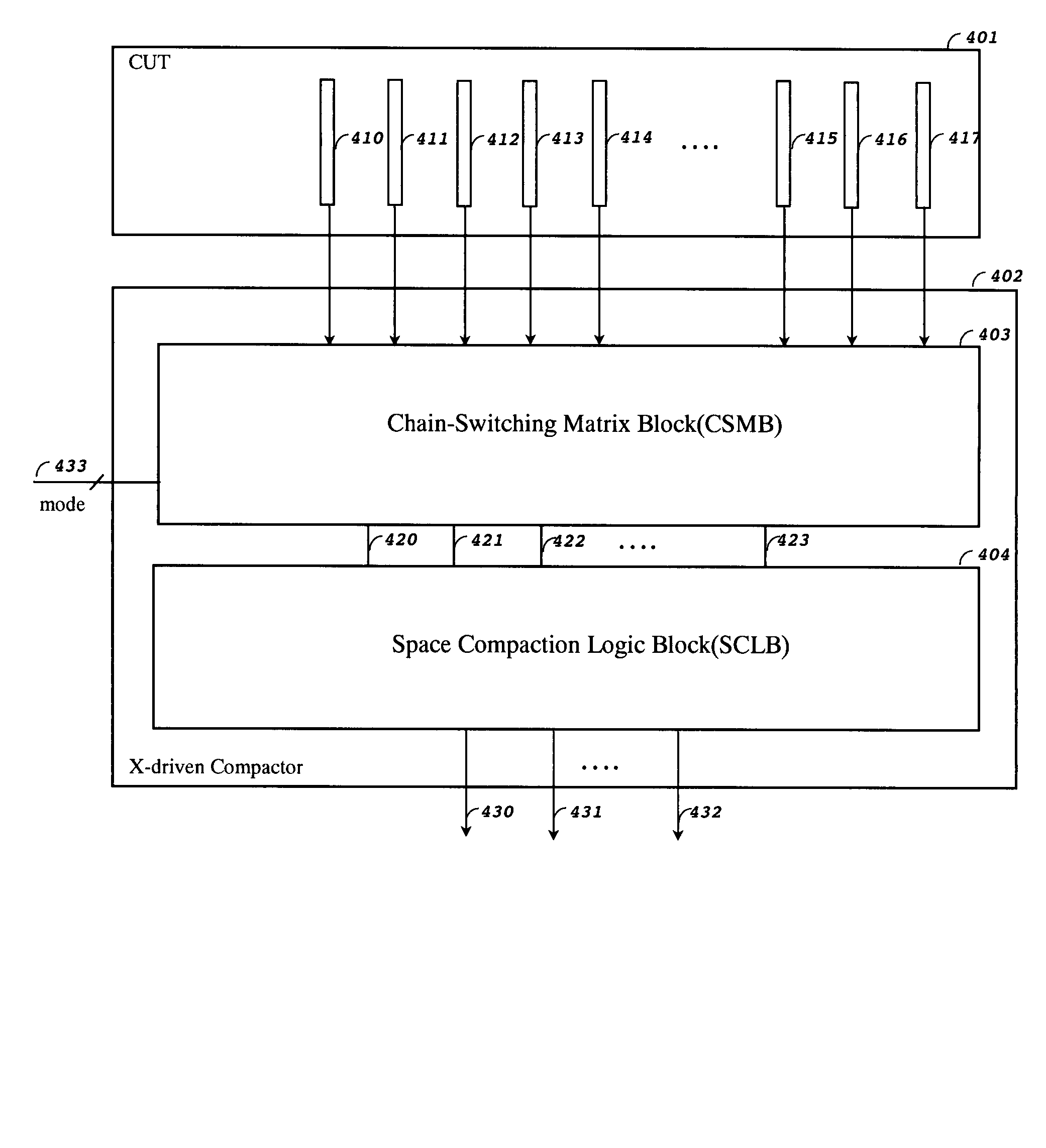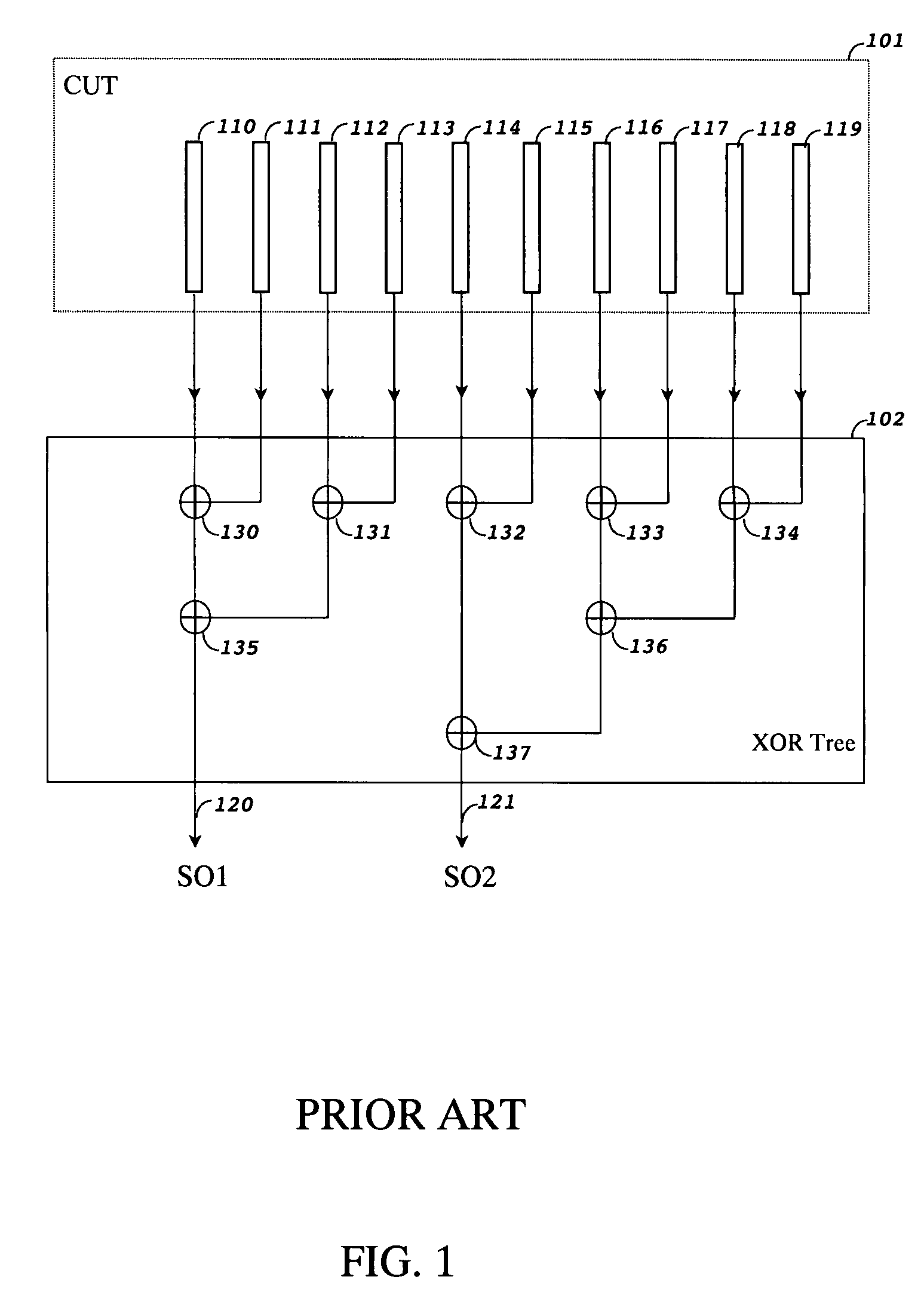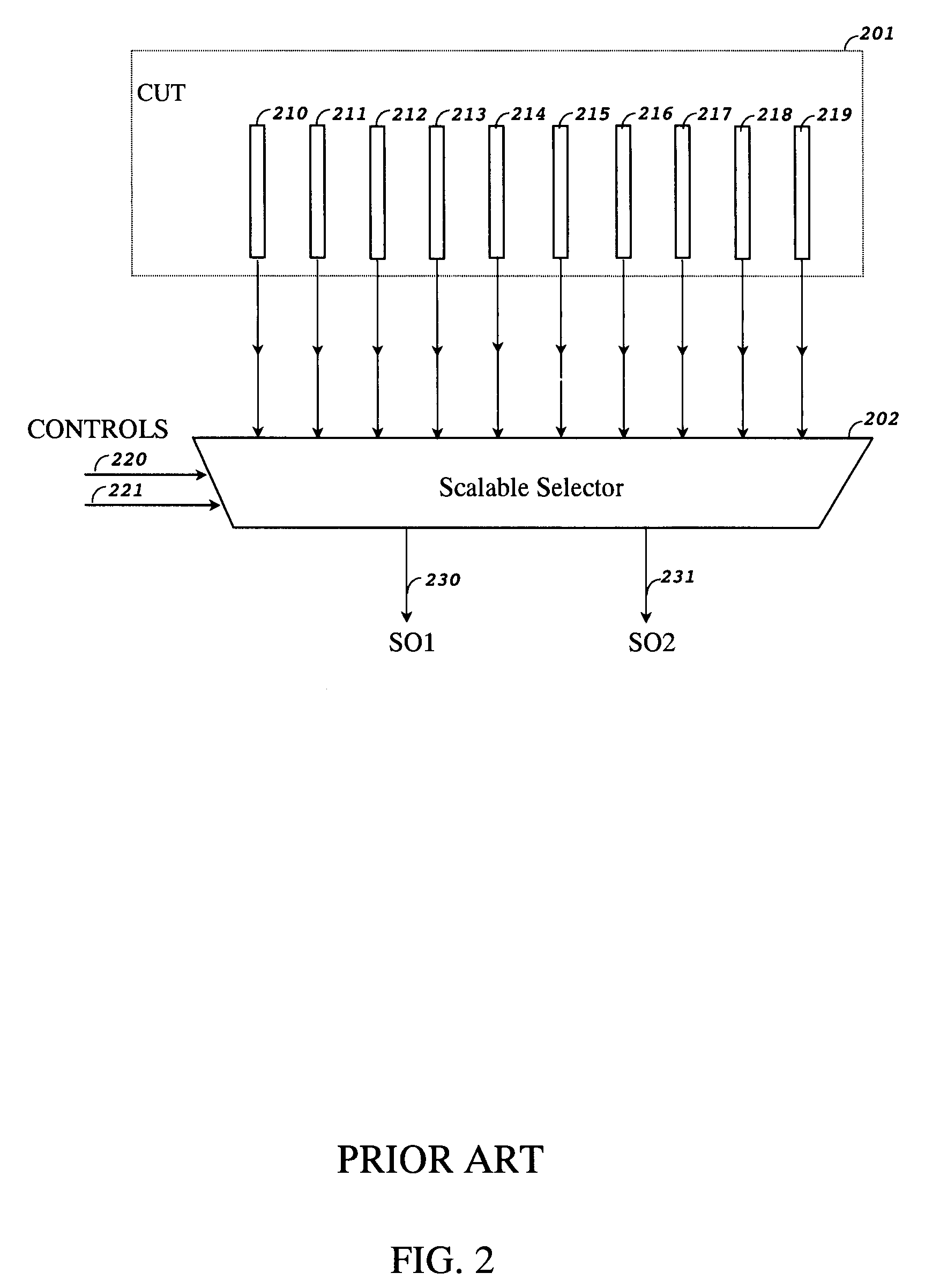Compacting test responses using X-driven compactor
a compactor and compactor technology, applied in the field of scanning-based design and testing using designfortest (dft) techniques, can solve problems such as destroying the signature, unable to repair, and aliasing, and achieve the effects of minimizing x-masking and/or alising, and minimizing x-induced masking and error masking
- Summary
- Abstract
- Description
- Claims
- Application Information
AI Technical Summary
Benefits of technology
Problems solved by technology
Method used
Image
Examples
Embodiment Construction
[0023]The following description is presently contemplated as the best mode of carrying out the present invention. This description is not to be taken in a limiting sense but is made merely for the purpose of describing the principles of the invention. The scope of the invention should be determined by referring to the appended claims.
[0024]FIG. 1 shows a circuit diagram of a prior art system that includes multiple scan chains 110-119 in a circuit-under-test (CUT) 101 and a Space compactor built with an Exclusive-OR (XOR) tree. The outputs of multiple scan chains 110-119 feed to a Space compactor 102 built with XOR gates 130-137. The results from the Space compactor become compressed test responses SO1-SO2120-121, which are then compared with expected test responses to determine the pass / fail status of the CUT 101.
[0025]FIG. 2 shows a circuit diagram of a prior art system that includes multiple scan chains 210-219 in a circuit-under-test (CUT) 201 and a Space compactor built with a s...
PUM
 Login to View More
Login to View More Abstract
Description
Claims
Application Information
 Login to View More
Login to View More - R&D
- Intellectual Property
- Life Sciences
- Materials
- Tech Scout
- Unparalleled Data Quality
- Higher Quality Content
- 60% Fewer Hallucinations
Browse by: Latest US Patents, China's latest patents, Technical Efficacy Thesaurus, Application Domain, Technology Topic, Popular Technical Reports.
© 2025 PatSnap. All rights reserved.Legal|Privacy policy|Modern Slavery Act Transparency Statement|Sitemap|About US| Contact US: help@patsnap.com



